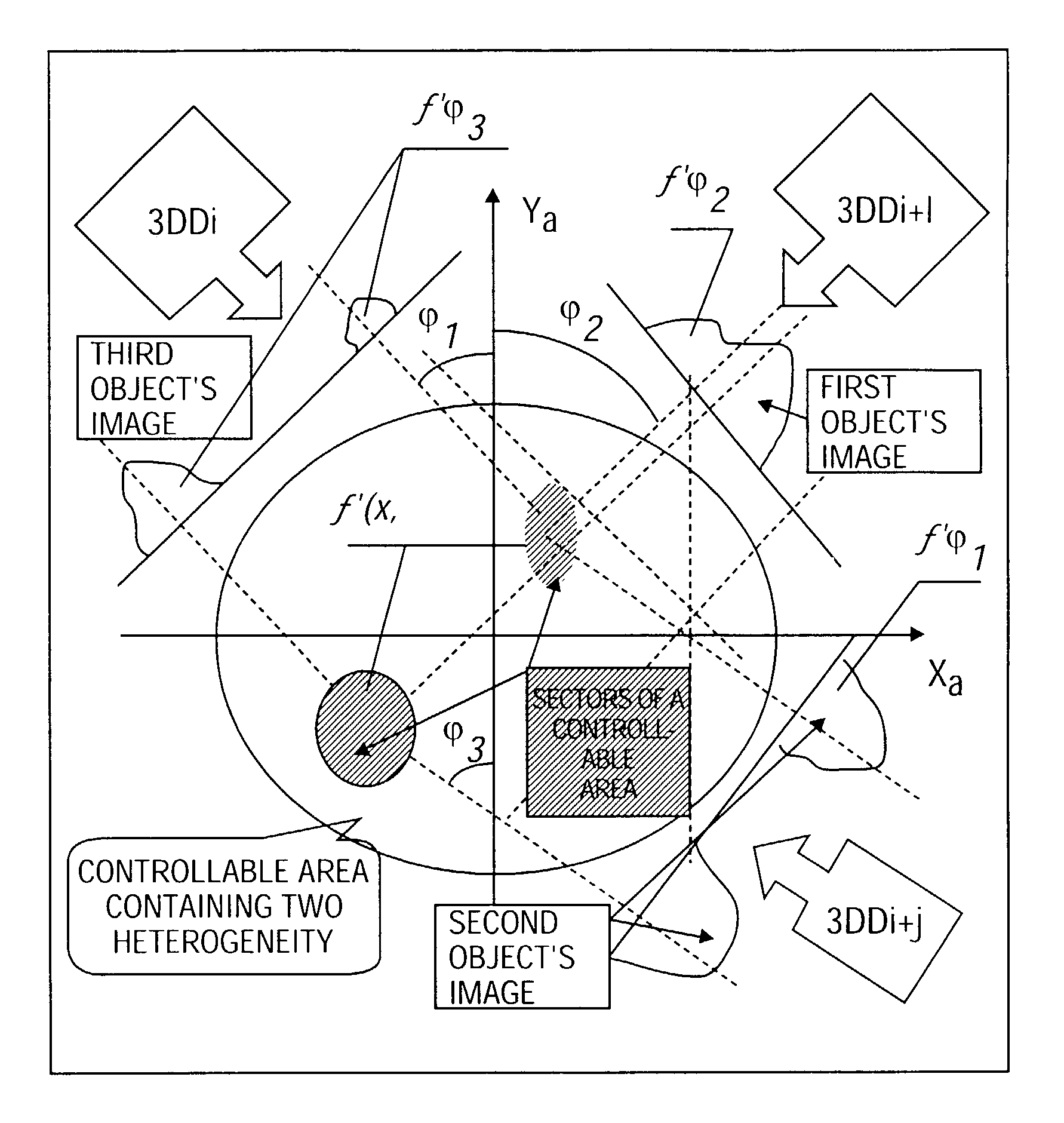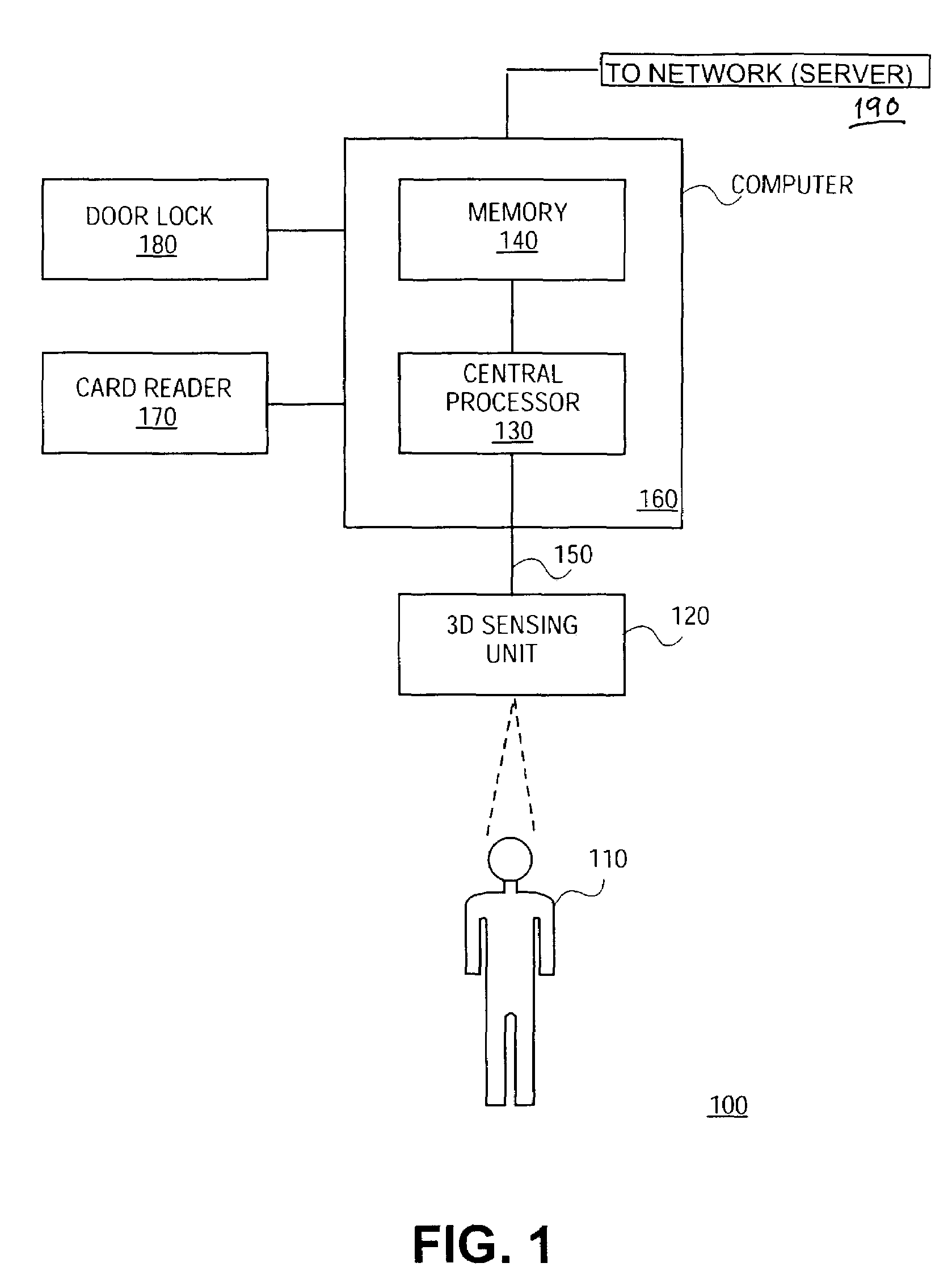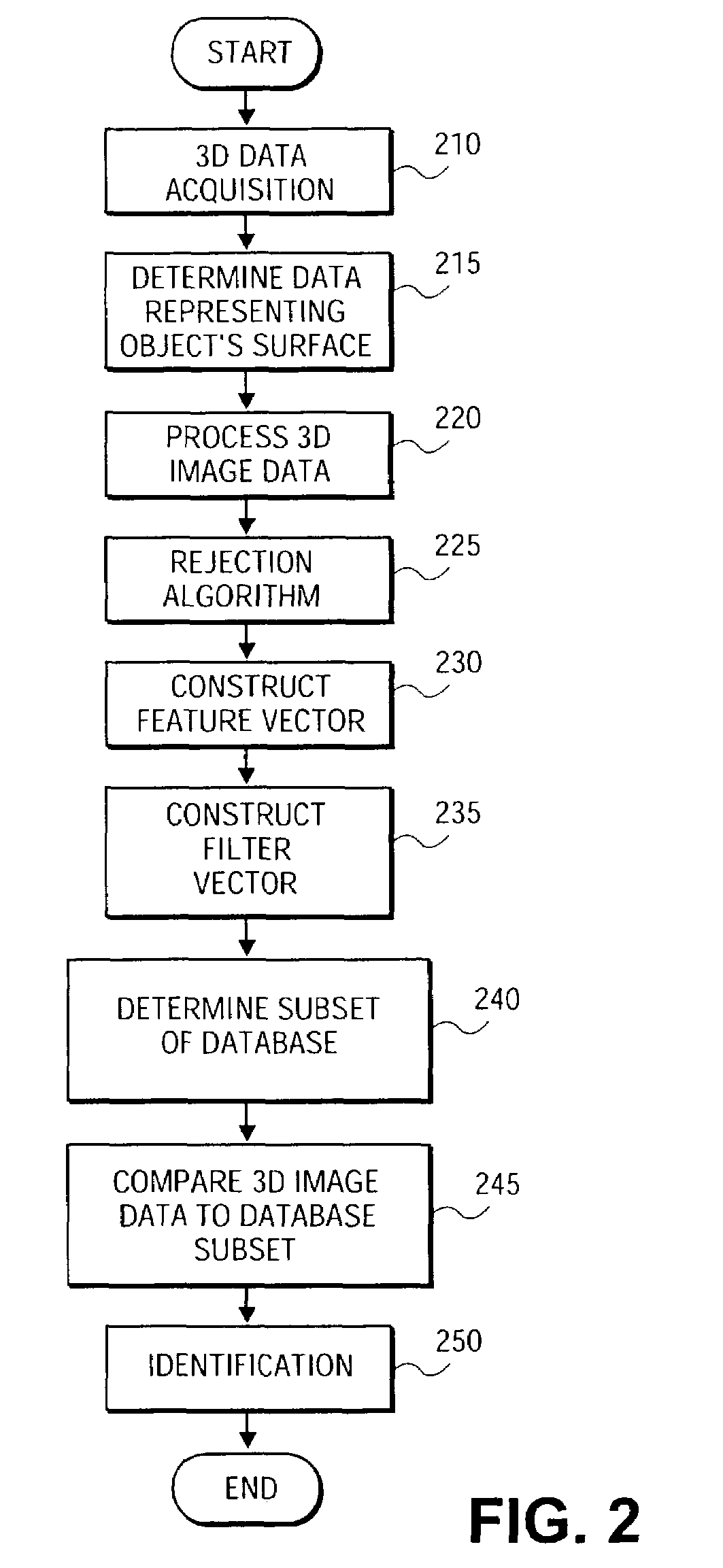Methods and systems for detecting and recognizing objects in a controlled wide area
a controlled wide area and object recognition technology, applied in the field of three-dimensional identification and recognition of objects or persons, can solve the problems of system errors, inconvenience for travelers, and therefore inacceptability, and achieve the effect of reducing the accuracy of the system, and reducing the difficulty of identifying the target imag
- Summary
- Abstract
- Description
- Claims
- Application Information
AI Technical Summary
Problems solved by technology
Method used
Image
Examples
Embodiment Construction
[0027]Consistent with the present invention, a 3D recognition system acquires 3D image data relating to an object for computer-aided processing of that 3D image data, and identifies the object. The principles of the present invention may be applied in a variety of disciplines, such as the fields of security and high-speed surveillance, where the principles of the present invention may be used to capture, detect, and recognize an image of a subject or groups of subjects or other target of interest within an area. An exemplary system may include one or more 3D sensing units or 3D sensors.
[0028]For instance, the principles of the present invention are particularly useful in detecting subjects or objects of interest where the subject or object of interest is situated within a designated area. One such example is where a person stands in front of a 3D sensor that is capable of acquiring 3D image data and using that image data for 3D facial recognition.
[0029]Additionally, the principles o...
PUM
 Login to View More
Login to View More Abstract
Description
Claims
Application Information
 Login to View More
Login to View More - R&D
- Intellectual Property
- Life Sciences
- Materials
- Tech Scout
- Unparalleled Data Quality
- Higher Quality Content
- 60% Fewer Hallucinations
Browse by: Latest US Patents, China's latest patents, Technical Efficacy Thesaurus, Application Domain, Technology Topic, Popular Technical Reports.
© 2025 PatSnap. All rights reserved.Legal|Privacy policy|Modern Slavery Act Transparency Statement|Sitemap|About US| Contact US: help@patsnap.com



